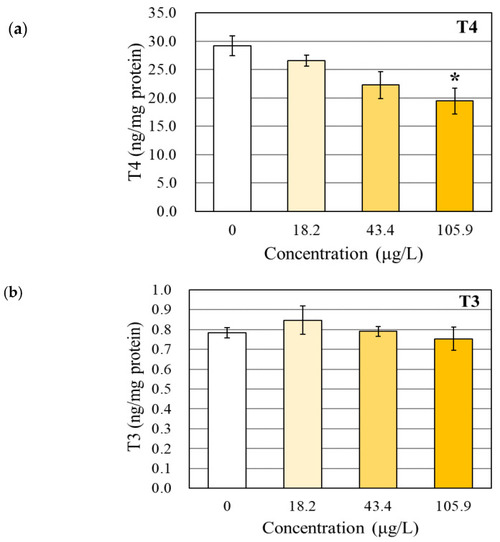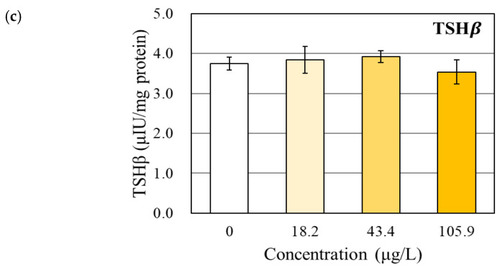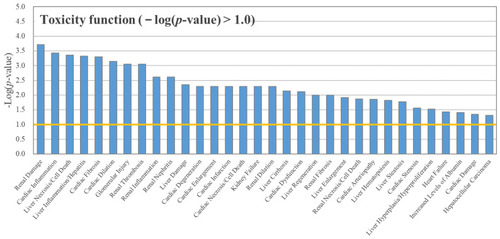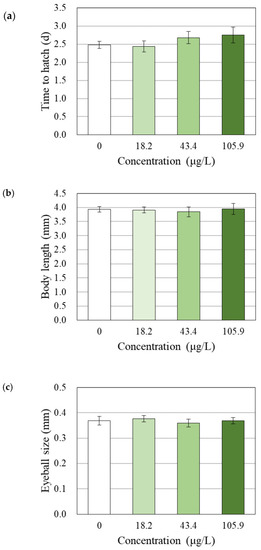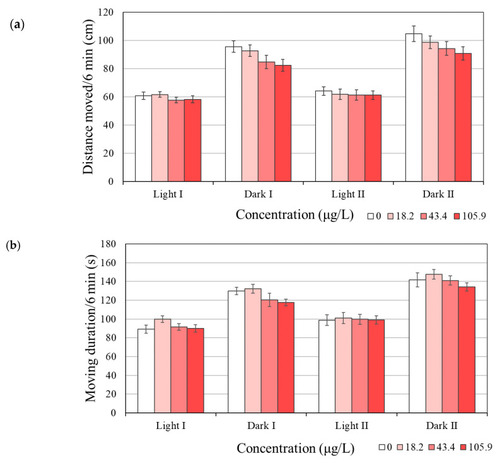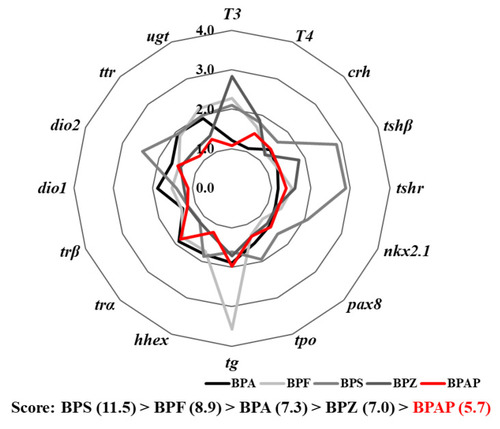- Title
-
Zebrafish Embryonic Exposure to BPAP and Its Relatively Weak Thyroid Hormone-Disrupting Effects
- Authors
- Lee, S., Eghan, K., Lee, J., Yoo, D., Yoon, S., Kim, W.K.
- Source
- Full text @ Toxics
|
Hormonal levels in whole-body homogenates of zebrafish larvae after bisphenol AP (BPAP) exposure (( |
|
Hormonal levels in whole-body homogenates of zebrafish larvae after bisphenol AP (BPAP) exposure (( |
|
Toxicity functions in zebrafish larvae after BPAP exposure (105.9 μg/L). Toxicity functions with −log ( |
|
Effects of BPAP on ( |
|
Locomotor activity (( |
|
Comparison of the thyroid hormone-disrupting potential of BPAP with those of previously reported bisphenols, i.e., BPA, BPF, BPS, and BPZ (Lee et al., 2019). |

